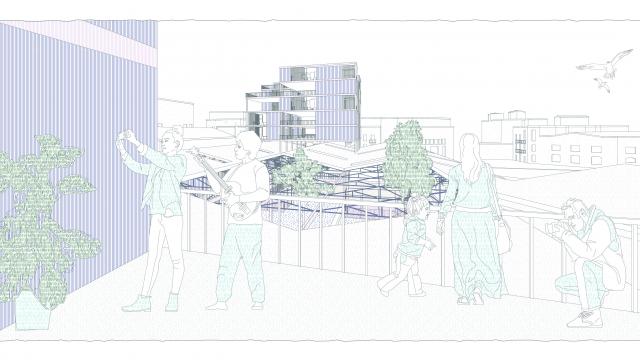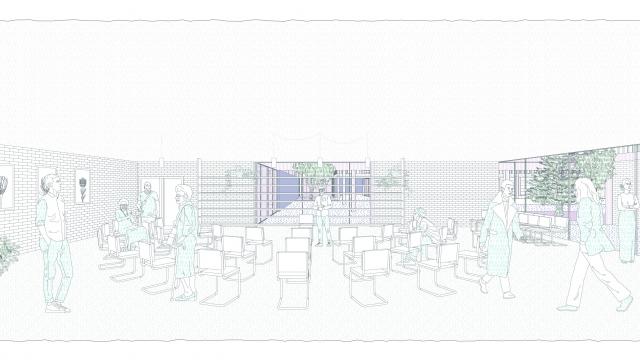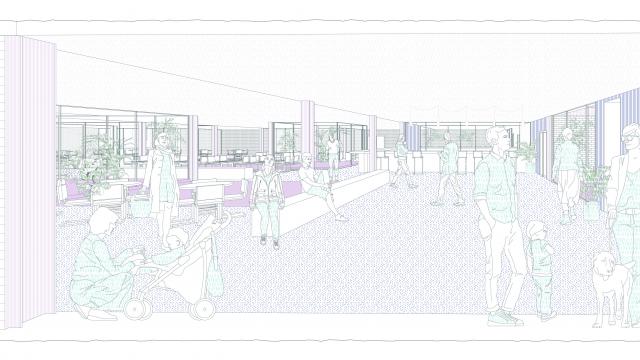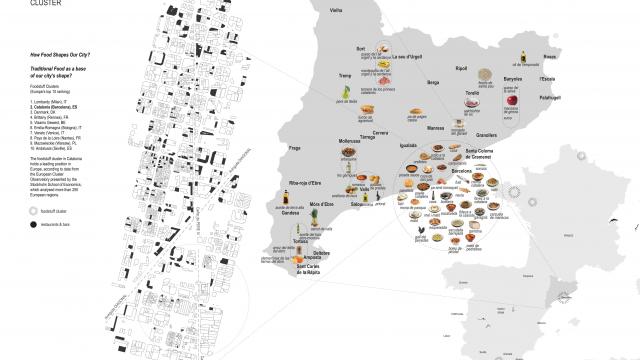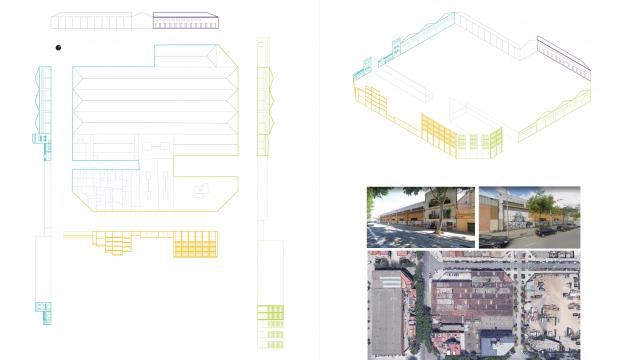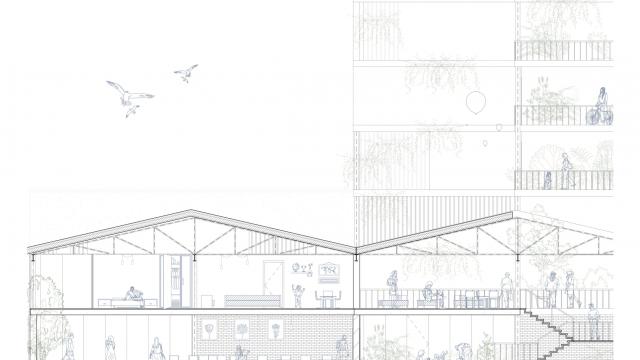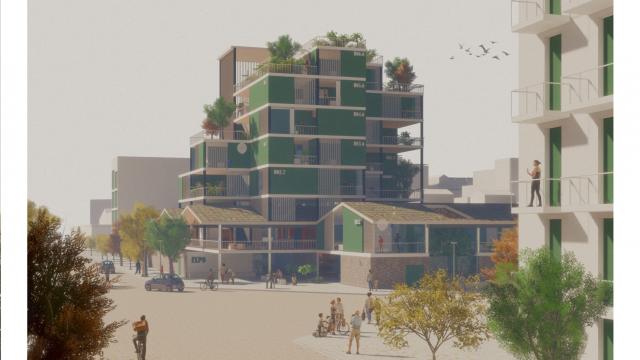ETSALS at TAB 2022: Feeding the city - 2050
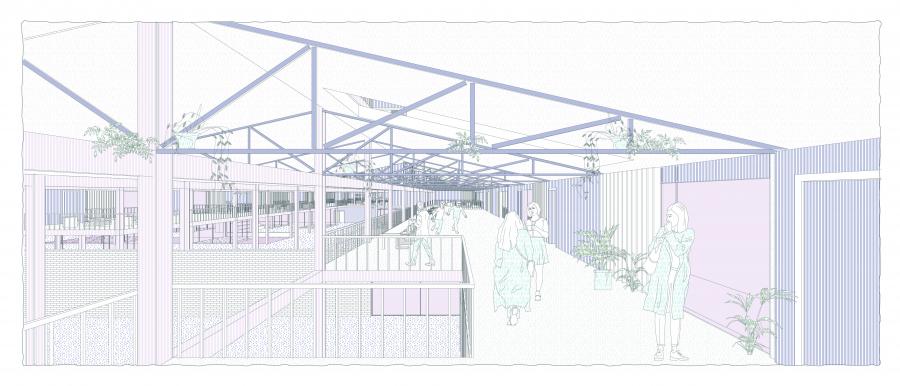
In its opening week, the Tallinn Museum of Architecture recovered pre-pandemic figures, gathering more than 3,000 visitors including architects, planners and builders from different parts of the world.
The theme revolves around food and the architecture of metabolism, taking up one of the key questions during the Covid-19 pandemic: Where does our food come from?
During TAB 2022, professionals, enthusiasts and students of architecture will be able to present and contemplate architectural projects for more than a month. In this sixth edition, a student of the Degree in Architecture of La Salle URL presents her project Feeding the city: 2050.
TAB 2022
The Architecture Biennale is an international event held every year since 2011. Created to bring Estonia's local architectural culture closer as well as to present relevant and current projects, TAB 2022 projects the future of architecture.
This year, the main theme of the event is Edible, thus underlining the importance of moving food production to the center of cities and achieving new consumption models. Within this category, we find different subjects:
-
Metabolic home - represents the facilities of a home, highlighting elements of the metabolic or digestive process.
-
From brick to soil - a theme that uses edible and compostable elements in everyday construction.
-
Food and geopolitics - how does food supply affect conflict zones?
-
Future food deals - a selection of books focused on cuisine developed by professional architects from related universities around the world.
-
The archaeology of architecture and food systems - This is an archive of speculative projects and works of art.
TAB 2022 is led by Lydia Kallipoliti and Areti Markopoulou, with Ivan Sergejev as principal advisor and Sonia Sobrino as assistant. The intention of the biennial this year is to reflect on the metabolic processes and food in our daily life from the architectural field.
Feeding the city: 2050
The projects featured follow the theme chosen by the Biennale's representatives: How does food shape our cities? Could traditional food serve as the basis for the shape of our city?
Karine Bagdasaryan, a student of ETSALS (Escuela Técnica Superior de Arquitectura de La Salle URL) pitched her project in the Visions competition of the Architecture Biennale 2022.
Food that used to be the center, the social core of the city [...] It used to be a social event, buying and selling food. - Caroline Steel
Her project Feeding the city: 2050 shows a new vision of Barcelona's Poblenou neighborhood. Focusing on one of the main streets that shaped the district, Pere IV; throughout the research, Karine discovered interesting organizations, located in unsightly areas that went unnoticed by passers-by and neighbors of the district.
A research center for art, a day center for young people and a clear difference between the "food spots" on the street confirmed the lack of diversity and little social interaction in some parts of the environment.
The project
Feeding the city: 2050 encompasses the complete food cycle that shapes our cities, maintaining the structure with a new purpose.
Trying to grasp the macro and micro scales by stepping inside and outside the city walls following areas of production, traditional food and restaurants, transportation circulation, historic buildings, waste, energy generation, as well as residents' narratives about food purchase and consumption.
FROM GLOBAL ISSUES TO INDIVIDUAL TALES AND NARRATIVES
The intervention was carried out on a 1-story high abandoned industrial building with a 15m span metal structure. The facade with skylights allowed the transformation of the courtyard openings, increasing 2 co-housing towers with natural light and providing greater privacy to the space.
ETSALS - Karine Bagdasaryan
A student of La Salle URL's Degree in Architecture Studies took advantage of the already existing conditions to introduce flexibility and current sustainable methods in construction. The project was presented in the Visions of TAB 2022 competition.
This can be applied not only to the structure, but also to the materials that will be found on the site and around it: the beauty of the rough, not perfect material, as it is found. -Karine.
The program includes different uses, activities, conference areas and workshops, referring to Harsha's triptych "We eat, We sleep, We eat" and emulating repetition and detail: small daily acts that show a great diversity and unique relationships.
